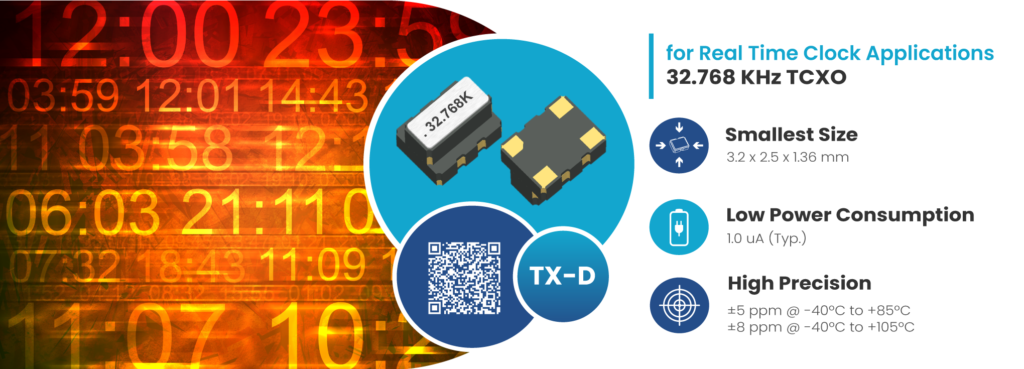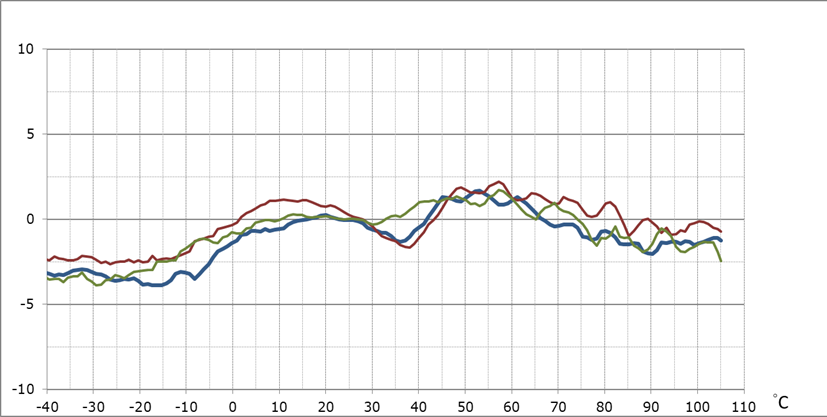| Are you searching for a high-precision, energy-efficient real-time clock solution? Look no further than the TX-D, the latest innovation in timekeeping technology.
With its ultra-compact dimensions of 3.2 x 2.5 x 1.36 mm, the TX-D is perfectly suited for space-constrained applications, offering a highly stable CMOS output at 32.768kHz. Its built-in TCXO ensures ±5 ppm stability even in extreme temperature ranges from -40ºC to +85ºC, extending to ±8 ppm up to +105ºC. This means you can rely on the TX-D for the most accurate timekeeping in challenging environments. What sets the TX-D apart is its incredibly low power consumption of just 1.0 µA, making it an ideal choice for portable and battery-operated devices where power efficiency is crucial. It supports a broad power supply range from 1.8 V to 3.3 V, enhancing its versatility across various applications. From IoT devices, smart meters, and data loggers to medical electronics, navigation systems, and industrial applications, the TX-D is your go-to solution for reliable and precise timekeeping. Its small form factor is particularly beneficial for modern, compact designs. Furthermore, with competitive pricing and industry-leading lead times, the TX-D is a cost-effective choice for your timekeeping needs. Available for engineering sample orders, you can now explore its capabilities firsthand. Interested in elevating your products with the TX-D’s unparalleled precision and efficiency? Contact Taitien Electronics’ sales team today for more information and to place your sample order. |
||
|
Features
|
Applications
|
Frequency stability vs Temperature
|




